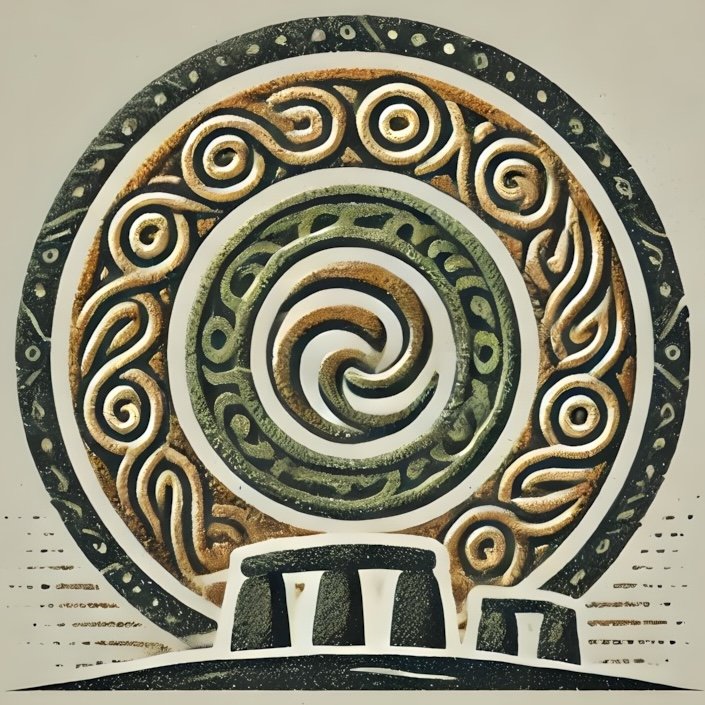The Emergence of Hillforts
Hillforts are among the most intriguing and significant archaeological features of the Irish landscape, serving as a testament to the complex social structures and military strategies of ancient communities. These fortified settlements, often perched on elevated ground, were not merely defensive structures; they were vibrant centers of social, political, and economic activity. The emergence of hillforts in Ireland marks a pivotal moment in the transition from tribal societies to more hierarchical forms of governance, reflecting the changing dynamics of power and conflict in prehistoric times. This chapter delves into the historical context of hillforts, explores key sites across Ireland, examines their architectural features, and considers their social and political implications, all while connecting these ancient structures to the rich tapestry of Irish mythology.
Historical Context
The development of hillforts in Ireland can be traced back to the late Iron Age, around 500 BCE to 500 CE, a period characterized by significant social transformation. As communities grew in size and complexity, the need for fortified settlements became apparent. Hillforts emerged as symbols of power and prestige, often associated with chieftains and ruling elites. The construction of these sites coincided with increased inter-group conflict, as tribes vied for resources and territory. The geographical positioning of hillforts on elevated terrain provided strategic advantages, allowing for surveillance of the surrounding landscape and serving as a refuge during times of conflict.
The rise of hillforts also reflects broader changes in European society during this period. Influences from continental Europe, particularly from the Celts, played a crucial role in shaping the architectural and social characteristics of these sites. As trade networks expanded and cultural exchanges flourished, the design and function of hillforts evolved, incorporating elements from various traditions and practices.
Key Hillfort Sites
Ireland boasts several notable hillforts, each with its unique history and significance. Among the most prominent is Dún Aonghasa, located on the Aran Islands. This impressive fortification, perched on a cliff overlooking the Atlantic Ocean, features multiple stone walls and is believed to have been a ceremonial center as well as a defensive stronghold. The fort’s strategic location and dramatic setting make it a popular destination for visitors interested in both archaeology and breathtaking landscapes.
Another significant site is Grianán of Aileach, situated in County Donegal. This hillfort, with its massive stone walls and panoramic views, is steeped in legend and history. It is thought to have been a royal site, associated with the ancient kings of Ulster. The fort’s construction reflects advanced engineering skills, and it remains a focal point for local folklore and cultural identity.
Dún Briste, a sea stack fort off the coast of County Mayo, offers a striking example of how natural landscapes were integrated into the design of hillforts. Accessible only by a narrow causeway, this site exemplifies the defensive strategies employed by ancient communities. The fort’s isolation also speaks to the importance of maritime resources in the lives of its inhabitants.
Architectural Features of Hillforts
The architectural characteristics of hillforts vary widely, reflecting regional differences and the specific needs of the communities that built them. Common features include earthen banks, stone walls, and ditches, often constructed in multiple concentric circles. These designs not only served defensive purposes but also symbolized the power and status of the ruling elite.
Many hillforts were constructed using locally sourced materials, showcasing the ingenuity and resourcefulness of their builders. The use of dry-stone walling techniques allowed for the creation of robust structures that could withstand the test of time. Some hillforts also incorporated wooden palisades, which would have provided additional protection against invaders.
Inside the fortifications, evidence of domestic structures, workshops, and communal spaces has been uncovered, indicating that these sites were not merely military strongholds but vibrant hubs of daily life. The presence of storage pits, hearths, and artifacts such as pottery and tools suggests that hillforts were centers of trade, craft production, and social interaction.
Social and Political Implications
The emergence of hillforts had profound implications for the social and political landscape of ancient Ireland. These structures served as focal points for the consolidation of power, enabling local elites to exert control over surrounding territories. The hierarchical nature of society became more pronounced, with chieftains and their followers residing within the fortified walls, while commoners lived in the surrounding areas.
Hillforts also played a crucial role in the establishment of alliances and the negotiation of power dynamics between different tribes. The presence of a hillfort could signify a community’s strength and influence, attracting allies and deterring potential adversaries. The social stratification evident in the layout and construction of these sites reflects the complexities of leadership and governance in pre-Christian Ireland.
Warfare and Conflict
The strategic significance of hillforts cannot be overstated, as they were often at the center of conflicts between rival groups. Archaeological evidence suggests that many hillforts were involved in violent confrontations, with signs of destruction and fortification repairs indicative of ongoing warfare. The construction of hillforts was, in part, a response to the increasing frequency of raids and territorial disputes.
The design of hillforts, with their imposing walls and elevated positions, provided a tactical advantage during conflicts. They served as refuges for communities under threat, allowing inhabitants to defend themselves against attackers. The presence of weapons and defensive structures within these sites further underscores their role as military strongholds.
Cultural Connections and Mythology
Hillforts are deeply intertwined with Irish mythology and cultural identity. Many of these sites are associated with legendary figures and tales that have been passed down through generations. For example, Grianán of Aileach is linked to the mythological hero Fionn mac Cumhaill, while Dún Aonghasa is steeped in stories of the Tuatha Dé Danann, the mythical race of gods and heroes in Irish lore.
These connections to mythology not only enrich our understanding of hillforts but also highlight their significance in the collective memory of the Irish people. They serve as reminders of a time when the landscape was imbued with meaning, and every hill and fort had a story to tell.
Conclusion
The emergence of hillforts in Ireland represents a fascinating chapter in the narrative of Irish prehistory. These structures encapsulate the complexities of social organization, warfare, and cultural identity in a time of significant change. As we explore the key sites, architectural features, and the rich tapestry of mythology associated with hillforts, we gain valuable insights into the lives of those who inhabited the Irish landscape long ago. Whether you are an archaeology enthusiast, a history buff, or simply a curious traveler, the hillforts of Ireland offer a captivating glimpse into the past, inviting exploration and discovery.
meta –

